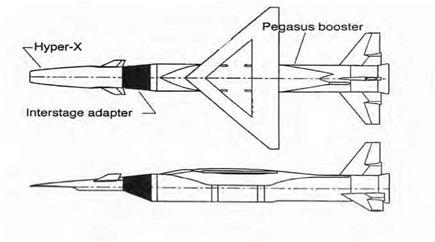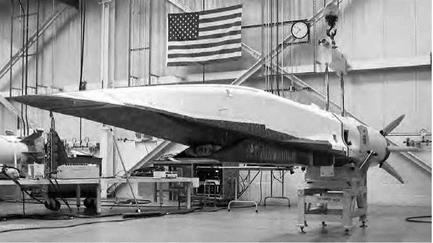Having surveyed the development of computational structural analysis within NASA, the contributions of various Centers, and key flight projects that tested and validated structural design and analysis methods in their ultimate application, we turn to the current state of affairs as of 2010 and future challenges.
Overall, even a cursory historical examination clearly indicates that the last four decades have witnessed revolutionary improvements in all of the following areas:
• Analysis capability.
• Complexity of structures that can be analyzed.
• Number of nodes.
• Types of elements.
• Complexity of processes simulated.
• Nonlinearity.
• Buckling.
• Other geometric nonlinearity.
• Material nonlinearity.
• Time-dependent properties.
• Yield or ultimate failure of some members.
• Statistical/nondeterministic processes.
• Thermal effects.
• Control system interactions.
• Usability.
• Execution time.
• Hardware improvements.
• Efficiency of algorithms.
• Adequate but not excessive model complexity.
• Robustness, diagnostics, and restart capability.
• Computing environment.
• Pre – and post-processing.
Before NASTRAN, capabilities generally available (i. e., not counting proprietary programs at the large aerospace companies) were limited to a few hundred nodes. In 1970, NASTRAN made it possible to analyze models with over 2,000 nodes. Currently, models with hundreds of thousands of nodes are routinely analyzed. The computing environment has changed just as dramatically, or more so: the computer used to be a shared resource among many users—sometimes an entire company, or it was located at a data center used by many companies—with punch cards for input and reams of paper for output. Now, there is a PC (or two) at every engineer’s desk. NASTRAN can run on a PC, although some users prefer to run it on UNIX machines or other platforms.
Technology has thus come full circle: NASA now makes extensive use of commercial structural analysis codes that have their roots in NASA technology. Commercial versions of NASTRAN have essentially superseded NASA’s COSMIC NASTRAN. That is appropriate, in this author’s opinion, because it is not NASA’s role to provide commercially competitive performance, user interfaces, etc. The existence and widespread use of these commercial codes indicates successful technology transition.
At the time of this writing, basic capability is relatively mature. Advances are still being made, but it is now possible to analyze the vast majority of macroscopic structural problems that are of practical interest in aeronautics and many other industries.
Improvements in the "usability” category are of greater interest to most engineers. Execution speed has improved orders of magnitude, but this has been partially offset by the corresponding orders-of-mag – nitude increases in model size. Engineers build models with hundreds of thousands of nodes, because they can.
Pre – and post-processing challenges remain. Building the model and interpreting the results typically take longer than actually running the analysis. It is by no means a trivial task to build a finite element model of a complex structure such as a complete airframe, or a major portion thereof. Some commercial software can generate finite element models automatically from CAD geometry. However, many practitioners in the aircraft industry prefer to have more involvement in the modeling process, because of the complexity of the analysis and the safety – critical nature of the task. The fundamental challenge is to make the modeling job easier, while providing the user with control when required and the ability to thoroughly check the resulting model.[972]
In 1982, Thomas Butler wrote, "I would compare the state of graphics pre – and post-processors today with the state that finite elements were in before NASTRAN came on the scene in 1964. Many good features exist. There is much to be desired in each available package.”[973] Industry practitioners interviewed today have expressed similar sentiments. There is no single pre – or post-processing product that meets every need. Some users deliberately switch between different pre – and post-processing programs, utilizing the strengths of each for different phases of the modeling task (such as creating components, manipulating them, and visualizing and interrogating the finished model). A reasonable number of distinct pre – and post-processing systems maintain commercial competition, which many users consider to be important.[974]
As basic analysis capability has become well established, researchers step back and look at the bigger picture. Integration, optimization, and uncertainty modeling are common themes at many of the NASA Centers. This includes integration of design and analysis, of analysis and testing, and of structural analysis with analysis in other disciplines. NASA Glenn Research Center is heavily involved in nondeterministic analysis methods, life prediction, modeling of failure mechanisms, and modeling of composite materials, including high-temperature material systems for propulsion applications. Research at Langley spans many fields, including multidisciplinary analysis and optimization of aircraft and spacecraft, analysis and test correlation, uncertainty modeling and "fuzzy structures,” and failure analysis.
In many projects, finite element analysis is being applied at the microscale to gain a better understanding of material behaviors. The
ability to perform such analysis is a noteworthy benefit coming from advances in structural analysis methods at the macroscopic level. Very real benefits to industry could result. The weight savings predicted from composite materials have been slow in coming, partly because of limitations on allowable stresses. In the civil aviation industry especially, such limitations are not necessarily based on the inherent characteristics of the material but on the limited knowledge of those characteristics. Analysis that gives insight into material behaviors near failure, documented and backed up by test results, may help to achieve the full potential of composite materials in airframe structures.
Applications of true optimization—such as rigorously finding the mathematical minimum of a "cost function”—are still relatively limited in the aircraft industry. The necessary computational tools exist. However, the combination of practical difficulties in automating complex analyses and a certain amount of cultural resistance has somewhat limited the application of true optimization in the aircraft industry up to the present time. There is untapped potential in this area. The path to reaching it is not necessarily in the development of better computer programs, but rather, in the development and demonstration of processes for the effective and practical use of capabilities that exist already. The DAMVIBS program (discussed previously in the section on the NASA Langley Research Center) might provide a model for how this kind of technology transfer can happen. In that program, industry teams essentially demonstrated to themselves that existing finite element programs could be useful in predicting and improving the vibration characteristics of helicopters—when coupled with some necessary improvements in modeling technique. All of the participants subsequently embraced the use of such methods in the design processes of their respective organizations. A comparable program could, perhaps, be envisioned in the field of structural and/or multidisciplinary optimization in aircraft design.[975]
Considering structural analysis as a stand-alone discipline, however, it can be stated without question that computational methods have been adopted throughout the aircraft industry. Specific processes vary between companies. Some companies perform more upfront optimization than others; some still test exhaustively, while others test minimally. But the aircraft industry as a whole has embraced computational structural analysis and benefited greatly from it.
The benefits of computational structural analysis may not be adequately captured in one concise list, but they include the following:
• Improved productivity of analysis.
• Ability to analyze a more complete range of load cases.
• Ability to analyze a structure more thoroughly than was previously practical.
• Ability to correct and update analyses as designs and requirements mature.
• Improved quality and consistency of analysis.
• Improved performance of the end product. Designs can be improved through more cycles of design/analysis in the early stages of a project, and earlier identification of structural issues, than previously practical.
• Improved capabilities in related disciplines: thermal modeling and acoustic modeling, for example. Some aircraft companies utilize finite element models in the design stage of an aircraft to develop effective noise reduction strategies.
• Ability to analyze structures that could not be practically analyzed before. For example, composite and metallic airframes are different. Metal structures typically have more discrete load paths. Composite structures, such as honeycomb-core panels, have less distinct load paths and are less amenable to analysis by hand using classical methods. Therefore, finite element analysis enables airplanes to be built in ways that would not be possible (or, at least, not verifiable) otherwise.
• Reduced cost and increased utility of testing. Analysis does not replace all testing, but it can greatly enhance the amount of knowledge gained from a test. For example, modeling performed ahead of a test series can help identify the appropriate locations for strain gages, accelerometers, and other instrumentation, and aid in the interpretation of the resulting test data. The most difficult or costly types of testing can certainly be reduced.
In a greatly simplified sense, the old paradigm is that
testing was the proof of the structure; now, testing validates the model, and the model proves the structure. Practically speaking, most aircraft companies practice something in between these two extremes.
NASA’s contributions have included not only the development of the tools but also the development and dissemination of techniques to apply the tools to practical problems and the provision of opportunities—through unique test facilities and, ultimately, flight research projects—to prove, validate, and improve the tools.
In other industries also, there is now widespread use of computerized structural analysis for almost every conceivable kind of part that must operate under conditions of high mechanical and/or thermal stress. NASTRAN is used to analyze buildings, bridges, towers, ships, wind tunnels and other specialized test facilities, nuclear power plants, steam turbines, wind turbines, chemical processing plants, microelectronics, robotic systems, tools, sports equipment, cars, trucks, buses, trains, engines, transmissions, and tires. It is used for geophysical and seismic analysis, and for medical applications.
In conclusion, finite element analysis would have developed with or without NASA’s involvement. However, by creating NASTRAN, NASA provided a centerpiece: a point of reference for all other development and an open-ended framework into which new capabilities could be inserted. This framework gradually collected the best or nearly best methods in every area. If NASTRAN had not been developed, different advances would have occurred only within proprietary codes used internally by different industrial companies or marketed by different software companies. There would have been little hope of consolidating all the important capabilities into one code or of making such capabilities available to the general user. NASTRAN brought high-powered finite element analysis within reach of many users much sooner than would have otherwise been the case. At the same time, the job of predicting every aspect of structural performance was by no means finished with the initial release of NASTRAN—nor is it finished yet. NASA has been and continues to be involved in the development of many new capabilities—developing programs and new ways to apply existing programs—and making the resulting tools and methods available to users in the aerospace industry and in many other sectors of the U. S. economy.
Appendix A:













